Ken-Ichi Sakakibara
Proposal of protocols for speech materials acquisition and presentation assisted by tools based on structured test signals
Sep 30, 2024Abstract:We propose protocols for acquiring speech materials, making them reusable for future investigations, and presenting them for subjective experiments. We also provide means to evaluate existing speech materials' compatibility with target applications. We built these protocols and tools based on structured test signals and analysis methods, including a new family of the Time-Stretched Pulse (TSP). Over a billion times more powerful computational (including software development) resources than a half-century ago enabled these protocols and tools to be accessible to under-resourced environments.
Simultaneous Measurement of Multiple Acoustic Attributes Using Structured Periodic Test Signals Including Music and Other Sound Materials
Sep 06, 2023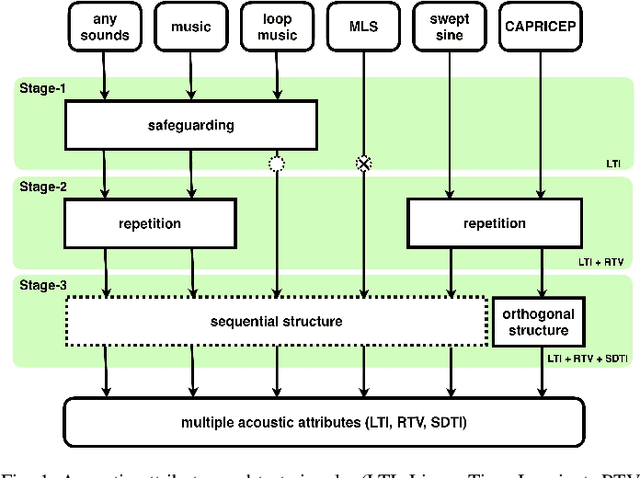
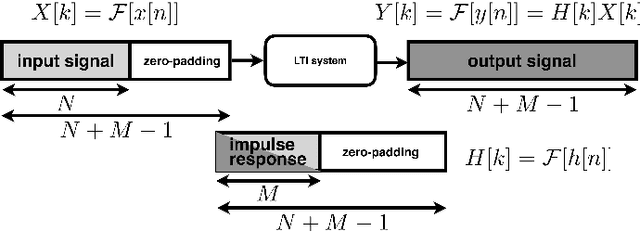
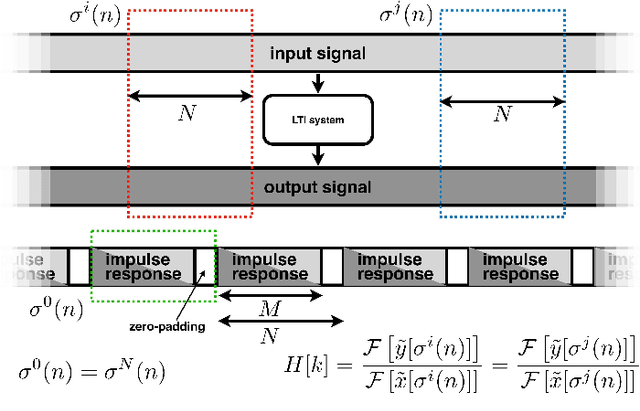
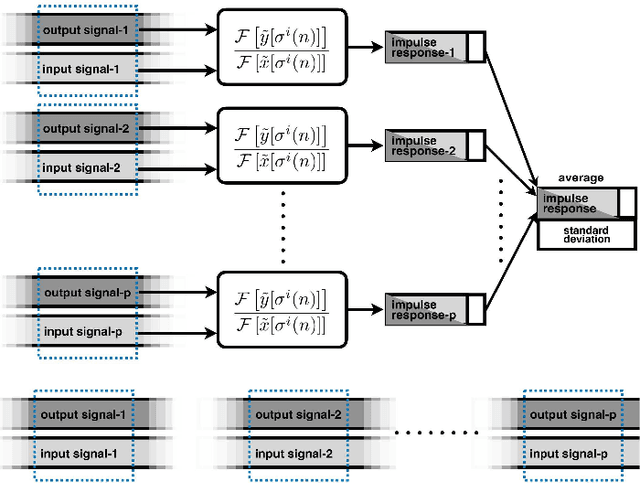
Abstract:We introduce a general framework for measuring acoustic properties such as liner time-invariant (LTI) response, signal-dependent time-invariant (SDTI) component, and random and time-varying (RTV) component simultaneously using structured periodic test signals. The framework also enables music pieces and other sound materials as test signals by "safeguarding" them by adding slight deterministic "noise." Measurement using swept-sin, MLS (Maxim Length Sequence), and their variants are special cases of the proposed framework. We implemented interactive and real-time measuring tools based on this framework and made them open-source. Furthermore, we applied this framework to assess pitch extractors objectively.
Measuring pitch extractors' response to frequency-modulated multi-component signals
Apr 02, 2022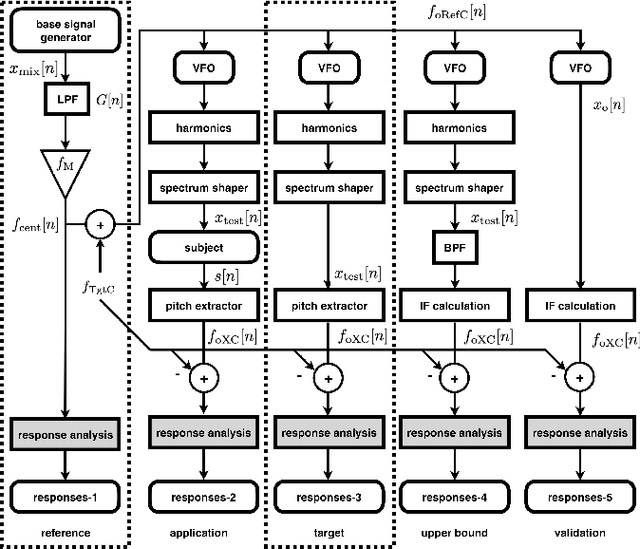
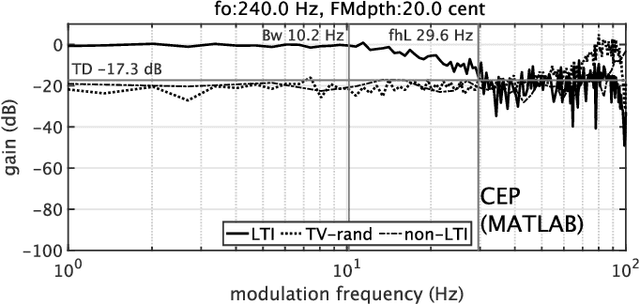
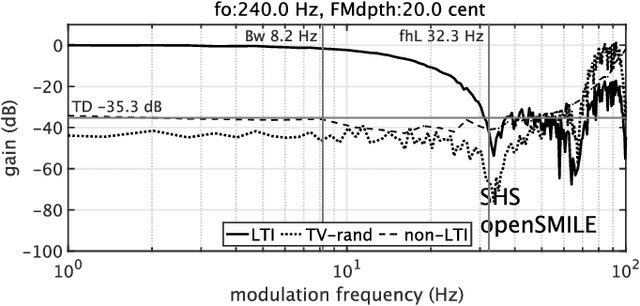
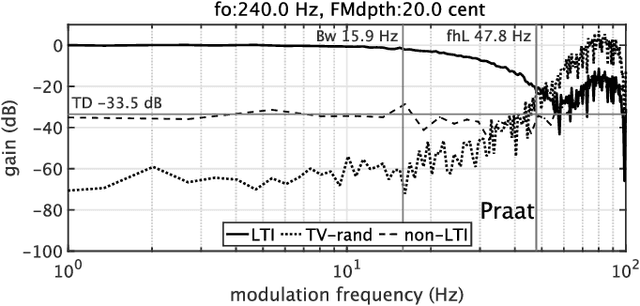
Abstract:This article focuses on the research tool for investigating the fundamental frequencies of voiced sounds. We introduce an objective and informative measurement method of pitch extractors' response to frequency-modulated tones. The method uses a new test signal for acoustic system analysis. The test signal enables simultaneous measurement of the extractors' responses. They are the modulation frequency response and the total distortion, including intermodulation distortions. We applied this method to various pitch extractors and placed them on several performance maps. We used the proposed method to fine-tune one of the extractors to make it the best fit tool for scientific research of voice fundamental frequencies.
An objective test tool for pitch extractors' response attributes
Apr 02, 2022

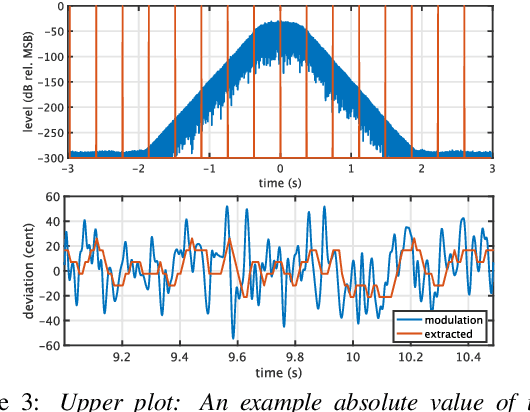

Abstract:We propose an objective measurement method for pitch extractors' responses to frequency-modulated signals. It enables us to evaluate different pitch extractors with unified criteria. The method uses extended time-stretched pulses combined by binary orthogonal sequences. It provides simultaneous measurement results consisting of the linear and the non-linear time-invariant responses and random and time-varying responses. We tested representative pitch extractors using fundamental frequencies spanning 80~Hz to 400~Hz with 1/48 octave steps and produced more than 1000 modulation frequency response plots. We found that making scientific visualization by animating these plots enables us to understand different pitch extractors' behavior at once. Such efficient and effortless inspection is impossible by inspecting all individual plots. The proposed measurement method with visualization leads to further improvement of the performance of one of the extractors mentioned above. In other words, our procedure turns the specific pitch extractor into the best reliable measuring equipment that is crucial for scientific research. We open-sourced MATLAB codes of the proposed objective measurement method and visualization procedure.
Objective measurement of pitch extractors' responses to frequency modulated sounds and two reference pitch extraction methods for analyzing voice pitch responses to auditory stimulation
Nov 05, 2021
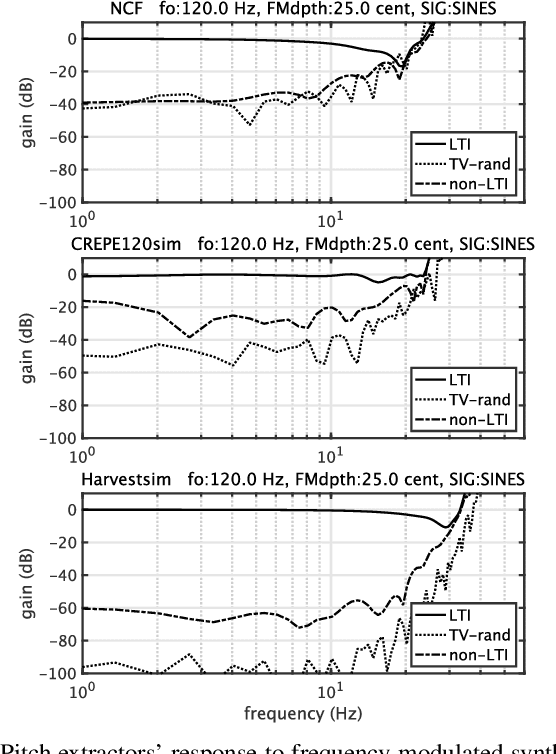
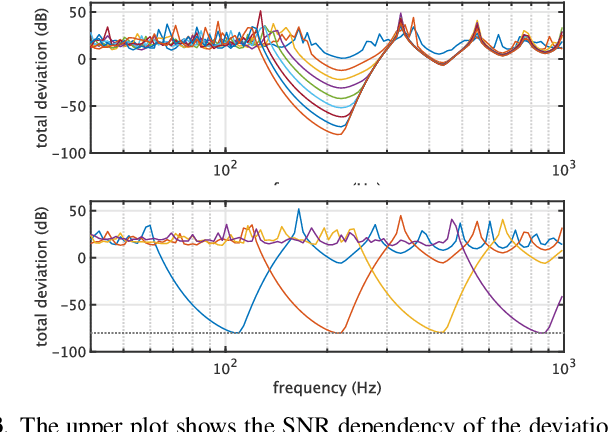
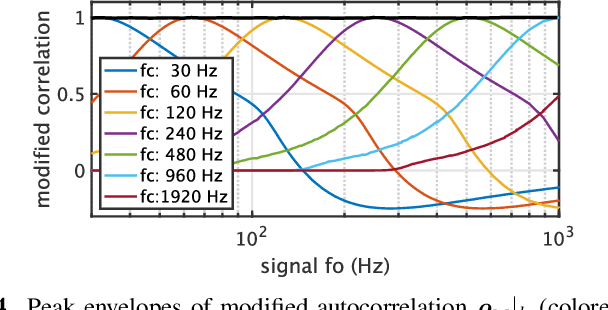
Abstract:We propose an objective measurement method for pitch extractors' responses to frequency-modulated signals. The method simultaneously measures the linear and the non-linear time-invariant responses and random and time-varying responses. It uses extended time-stretched pulses combined by binary orthogonal sequences. Our recent finding of involuntary voice pitch response to auditory stimulation while voicing motivated this proposal. The involuntary voice pitch response provides means to investigate voice chain subsystems individually and objectively. This response analysis requires reliable and precise pitch extraction. We found that existing pitch extractors failed to correctly analyze signals used for auditory stimulation by using the proposed method. Therefore, we propose two reference pitch extractors based on the instantaneous frequency analysis and multi-resolution power spectrum analysis. The proposed extractors correctly analyze the test signals. We open-sourced MATLAB codes to measure pitch extractors and codes for conducting the voice pitch response experiment on our GitHub repository.
Mixture of orthogonal sequences made from extended time-stretched pulses enables measurement of involuntary voice fundamental frequency response to pitch perturbation
Apr 03, 2021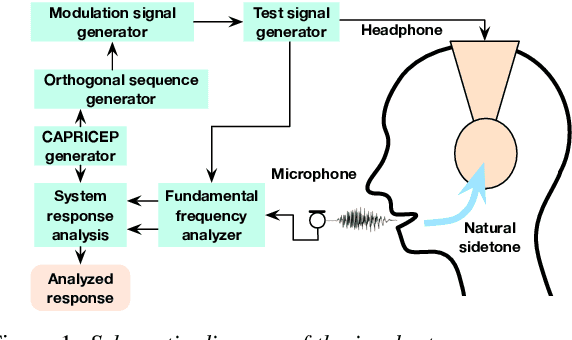

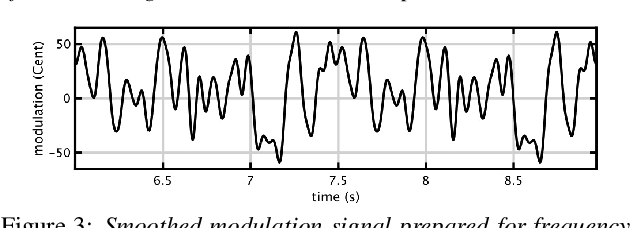
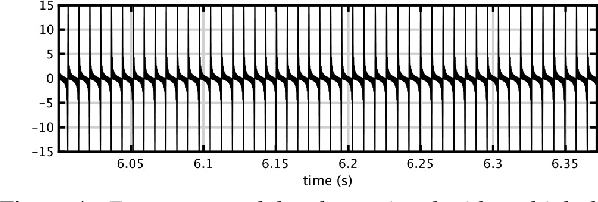
Abstract:Auditory feedback plays an essential role in the regulation of the fundamental frequency of voiced sounds. The fundamental frequency also responds to auditory stimulation other than the speaker's voice. We propose to use this response of the fundamental frequency of sustained vowels to frequency-modulated test signals for investigating involuntary control of voice pitch. This involuntary response is difficult to identify and isolate by the conventional paradigm, which uses step-shaped pitch perturbation. We recently developed a versatile measurement method using a mixture of orthogonal sequences made from a set of extended time-stretched pulses (TSP). In this article, we extended our approach and designed a set of test signals using the mixture to modulate the fundamental frequency of artificial signals. For testing the response, the experimenter presents the modulated signal aurally while the subject is voicing sustained vowels. We developed a tool for conducting this test quickly and interactively. We make the tool available as an open-source and also provide executable GUI-based applications. Preliminary tests revealed that the proposed method consistently provides compensatory responses with about 100 ms latency, representing involuntary control. Finally, we discuss future applications of the proposed method for objective and non-invasive auditory response measurements.
 Add to Chrome
Add to Chrome Add to Firefox
Add to Firefox Add to Edge
Add to Edge